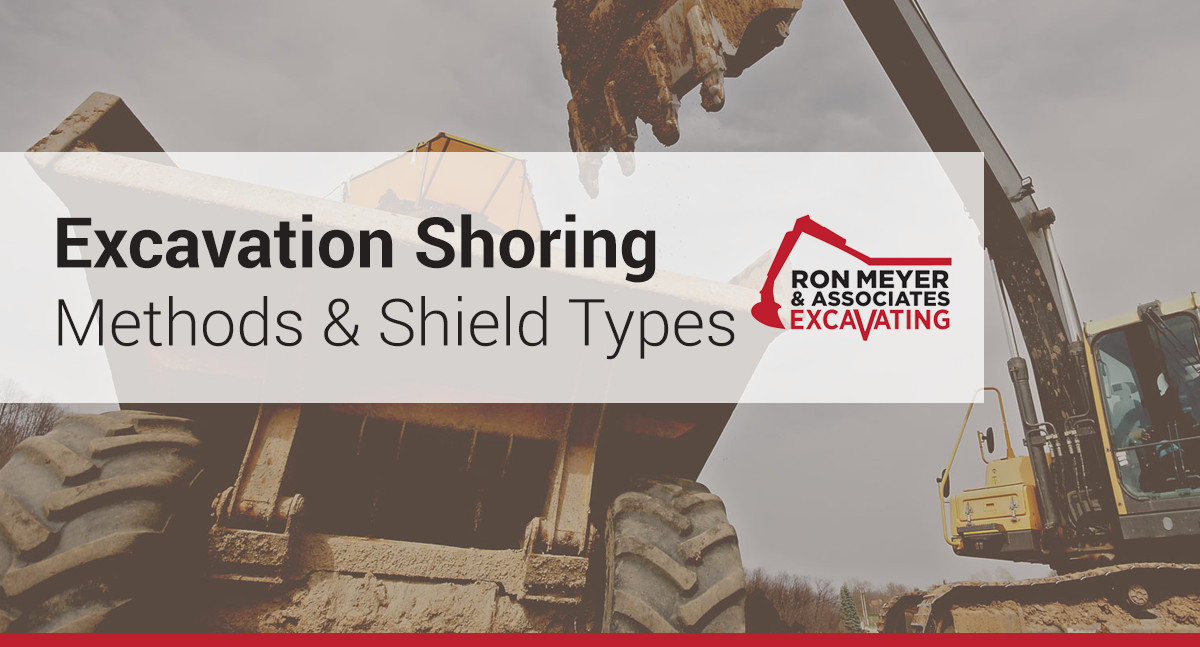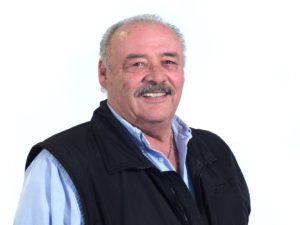
Shoring is the provision of a support system for trench faces used to prevent movement of soil, underground utilities, roadways, and foundations. Shoring or shielding is used when the location or depth of the cut makes sloping back to the maximum allowable slope impractical. Shoring systems consist of posts, wales, struts, and sheeting. There are two basic types of shoring, timber and aluminum hydraulic.
Hydraulic Shoring
The trend today is toward the use of hydraulic shoring, a prefabricated strut and/or wale system manufactured of aluminum or steel. Hydraulic shoring provides a critical safety advantage over timber shoring because workers do not have to enter the trench to install or remove hydraulic shoring. Other advantages of most hydraulic systems are that they:
- Are light enough to be installed by one worker;
- Are gauge-regulated to ensure even distribution of pressure along the trench line;
- Can have their trench faces “preloaded” to use the soil’s natural cohesion to prevent movement; and
- Can be adapted easily to various trench depths and widths.
All shoring should be installed from the top down and removed from the bottom up. Hydraulic shoring should be checked at least once per shift for leaking hoses and/or cylinders, broken connections, cracked nipples, bent bases, and any other damaged or defective parts.
Pneumatic Shoring
Pneumatic shoring works in a manner similar to hydraulic shoring. The primary difference is that pneumatic shoring uses air pressure in place of hydraulic pressure. A disadvantage to the use of pneumatic shoring is that an air compressor must be on site.
- Screw Jacks. Screw jack systems differ from hydraulic and pneumatic systems in that the struts of a screw jack system must be adjusted manually. This creates a hazard because the worker is required to be in the trench in order to adjust the strut. In addition, uniform “preloading” cannot be achieved with screw jacks, and their weight creates handling difficulties.
- Single-Cylinder Hydraulic Shores. Shores of this type are generally used in a water system, as an assist to timber shoring systems, and in shallow trenches where face stability is required.
- Underpinning. This process involves stabilizing adjacent structures, foundations, and other intrusions that may have an impact on the excavation. As the term indicates, underpinning is a procedure in which the foundation is physically reinforced. Underpinning should be conducted only under the direction and with the approval of a registered professional engineer.
Shielding Types
Trench Boxes
Trench Boxes are different from shoring because, instead of shoring up or otherwise supporting the trench face, they are intended primarily to protect workers from cave-ins and similar incidents. The excavated area between the outside of the trench box and the face of the trench should be as small as possible. The space between the trench boxes and the excavation side are backfilled to prevent lateral movement of the box. Shields may not be subjected to loads exceeding those which the system was designed to withstand.
Combined Use
Combined Use. Trench boxes are generally used in open areas, but they also may be used in combination with sloping and benching. The box should extend at least 18 in (0.45 m) above the surrounding area if there is sloping toward excavation. This can be accomplished by providing a benched area adjacent to the box.
Earth excavation to a depth of 2 ft (0.61 m) below the shield is permitted, but only if the shield is designed to resist the forces calculated for the full depth of the trench and there are no indications while the trench is open of possible loss of soil from behind or below the bottom of the support system. Conditions of this type require observation on the effects of bulging, heaving, and boiling as well as surcharging, vibration, adjacent structures, etc., on excavating below the bottom of a shield. Careful visual inspection of the conditions mentioned above is the primary and most prudent approach to hazard identification and control.
This information is provided via OSHA’s Technical Manual. For more information on shoring & shielding types, see Excavations: Hazard Recognition in Trenching and Shoring.
At Ron Meyer & Associate Excavating, Inc, we’ve been providing underground and commercial construction to private and commercial businesses for 39 years. As the general contractor or subcontractor, our experienced foremen, equipment operators, pipe layers, truck drivers and well-maintained equipment fleet make us an undeniable choice for your excavating services. Let’s talk about your project!

As 45 years of experience as an underground/site contactor and a third generation contractor, Ron takes time to go through each individual project with the supervisor and is responsible for all scheduling and equipment logistics. He’s also involved in all troubleshooting for projects.